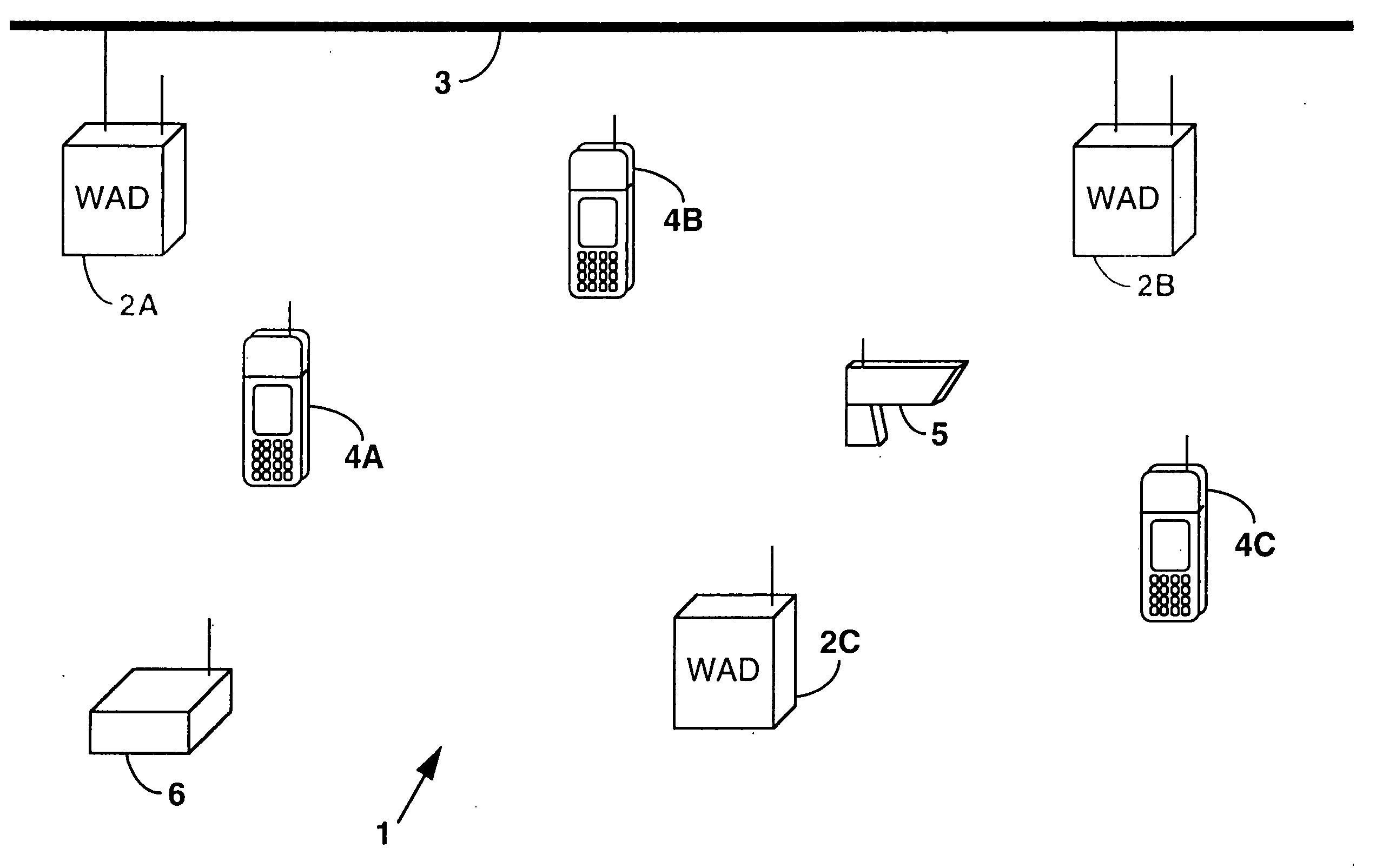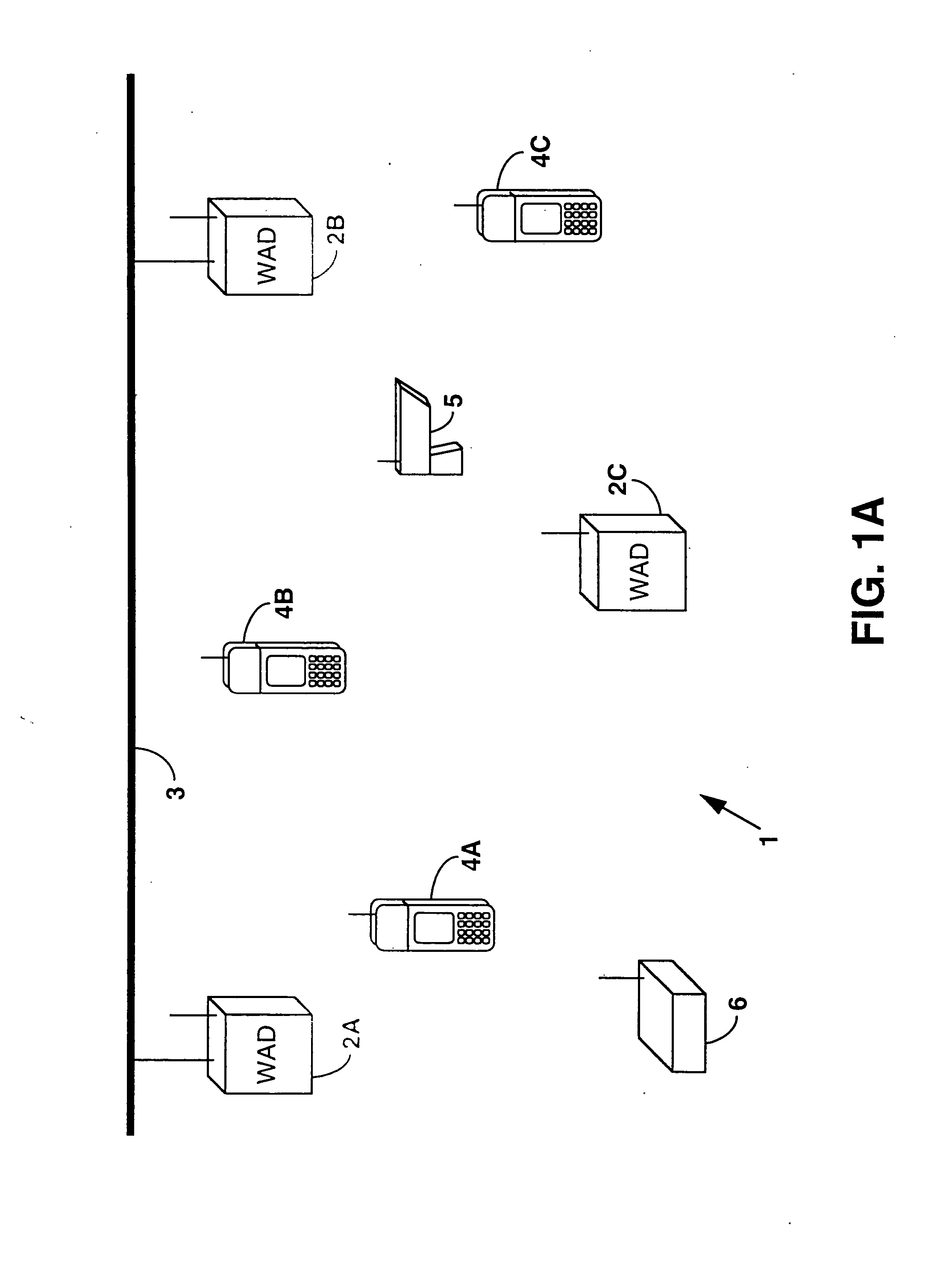Spread spectrum transceiver module utilizing multiple mode transmission
a technology of spread spectrum radio and transceiver module, which is applied in the direction of electrical equipment, power management, wireless commuication services, etc., can solve the problems of affecting the communication between and affecting the service life of wireless local area networks
- Summary
- Abstract
- Description
- Claims
- Application Information
AI Technical Summary
Benefits of technology
Problems solved by technology
Method used
Image
Examples
Embodiment Construction
1 and 3 are full band direct sequence and provide no inband interference protection other than high process gains of 18.7 dB and 15.7 dB respectively. Out-of-band protection from cellular transmissions operating in the vicinity is provided. MODE 1 provides good coverage area and rejection of multipath signal. MODE 3 provides shorter coverage are in return for a high speed data rate.
[0171] MODE 2 is a channelized direct sequence mode having a process gain of 17 dB. A single direct sequence cordless telephone operating in the vicinity will not degrade performance on at least four of the channels. MODE 2 provides a reasonable coverage area and jammer avoidance with channelization.
[0172] MODE 4 utilizes full band frequency hopping having a process gain of 17.1 dB. A single direct sequence cordless telephone will not degrade average throughput by more than 10 percent. MODE 4 provides moderate coverage area and high system capacity with dynamic jammer immunity with frequency hoping.
[0173]...
PUM
 Login to View More
Login to View More Abstract
Description
Claims
Application Information
 Login to View More
Login to View More - R&D
- Intellectual Property
- Life Sciences
- Materials
- Tech Scout
- Unparalleled Data Quality
- Higher Quality Content
- 60% Fewer Hallucinations
Browse by: Latest US Patents, China's latest patents, Technical Efficacy Thesaurus, Application Domain, Technology Topic, Popular Technical Reports.
© 2025 PatSnap. All rights reserved.Legal|Privacy policy|Modern Slavery Act Transparency Statement|Sitemap|About US| Contact US: help@patsnap.com



